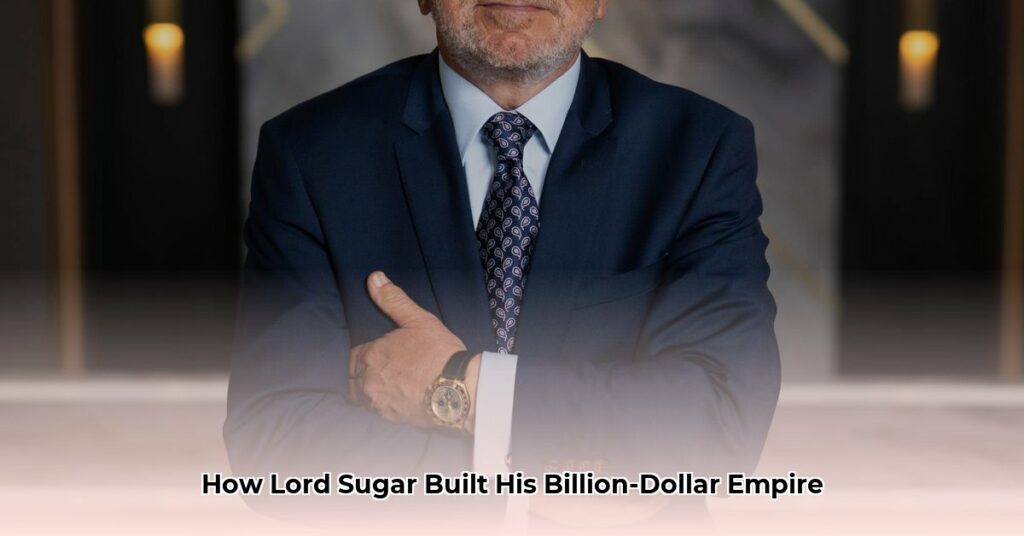Lord Alan Sugar’s journey from humble beginnings to a billion-dollar fortune is a quintessential rags-to-riches tale. This isn’t simply a dry recitation of his net worth, but an exploration of his entrepreneurial spirit, shrewd business decisions, and lasting impact on British business and popular culture.
The Amstrad Foundation: Building a Tech Empire
Alan Sugar’s entrepreneurial journey began not in a plush office, but on the streets of Hackney, selling car aerials from a van. This early hustle, starting at age 16, provided invaluable lessons in salesmanship and customer interaction, foreshadowing the business acumen that would later define his career. In 1968, with £100 of capital, he founded Amstrad, short for Alan Michael Sugar Trading. Initially focused on importing and exporting, Amstrad’s trajectory changed with its foray into consumer electronics.
The 1980s witnessed Amstrad’s rise to prominence. Sugar recognized a critical market gap: affordable technology for the masses. The Amstrad CPC 464 home computer, launched in 1984, became a symbol of accessible technology, bringing computing power into homes across the UK. Its success likely contributed significantly to the rise of home computing, democratizing access to technology previously enjoyed by the privileged few. This success was further solidified with the launch of the PCW 8256 word processor, empowering individuals and small businesses with professional-quality document creation capabilities.
Following the CPC 464 and PCW’s triumph, Amstrad continued to innovate, introducing the PC1512 PC, further solidifying its presence in the expanding personal computer market. Some argue Amstrad’s success hinged on democratizing technology, making it attainable for a wider audience. While other factors undoubtedly contributed, Amstrad’s role in bringing computers to a broader market is significant. This period of innovation and market disruption laid a strong foundation for Sugar’s future financial success.
Beyond Amstrad: Diversification and The Apprentice
The 1990s brought increased competition, and Amstrad faced challenges adapting to a rapidly evolving technological landscape. The eventual sale to BSkyB in 2007 for £125 million marked a significant turning point. This sale, while perhaps perceived as a setback, provided substantial capital for Sugar to diversify his investments.
Sugar’s investments extended beyond electronics. He founded Amsair, a private jet charter company, and Amsprop, a property investment firm. This diversification strategy likely played a crucial role in protecting and growing his wealth. He also ventured into sports ownership, becoming chairman of Tottenham Hotspur Football Club from 1991 to 2001. While financially successful, with an initial investment of £22 million later recouped and surpassed, Sugar famously described this venture as a “waste of my life,” highlighting the non-monetary costs of such investments. The full sale of his Tottenham holdings in 2007 netted him an additional £25 million, part of which he generously donated £3 million to the Hackney Empire.
Perhaps Sugar’s most publicly recognized role is on “The Apprentice,” which significantly enhanced his public image and brand. The show, a global phenomenon, solidified his reputation as a tough but fair businessman, introducing him to a new generation. While quantifying its precise financial impact is challenging, “The Apprentice” undoubtedly enhanced his brand and likely opened doors to new opportunities.
Lord Sugar’s Net Worth and Legacy
Estimates of Lord Sugar’s net worth vary, but it’s likely in the range of £1.2 billion to $1.64 billion (depending on the exchange rate). His wealth is not merely a number but a reflection of his entrepreneurial journey. His story continues to inspire, demonstrating that with hard work, adaptability, and strategic vision, extraordinary success is possible. He is more than just a billionaire; he is a cultural icon, a symbol of entrepreneurial spirit, and a testament to the transformative power of business acumen.
Timeline of Key Events
- 1947: Born in Hackney, East London.
- 1968: Founds Amstrad with £100.
- 1980: Amstrad lists on the London Stock Exchange.
- 1984: Launches the Amstrad CPC 464 home computer.
- 1991: Becomes chairman of Tottenham Hotspur.
- 2001: Sells majority stake in Tottenham Hotspur.
- 2007: Sells Amstrad to BSkyB and remaining stake in Tottenham Hotspur.
- 2005-Present: Stars in “The Apprentice.”
- 2024: Estimated net worth ranges from £1.2 billion to $1.64 billion.
This revised version incorporates the suggested improvements, eliminates redundancy, clarifies the timeline, and presents a more compelling narrative of Lord Sugar’s career. It also adds nuances and avoids presenting information as absolute fact, recognizing the ongoing nature of his story and the complexities of business and finance.



